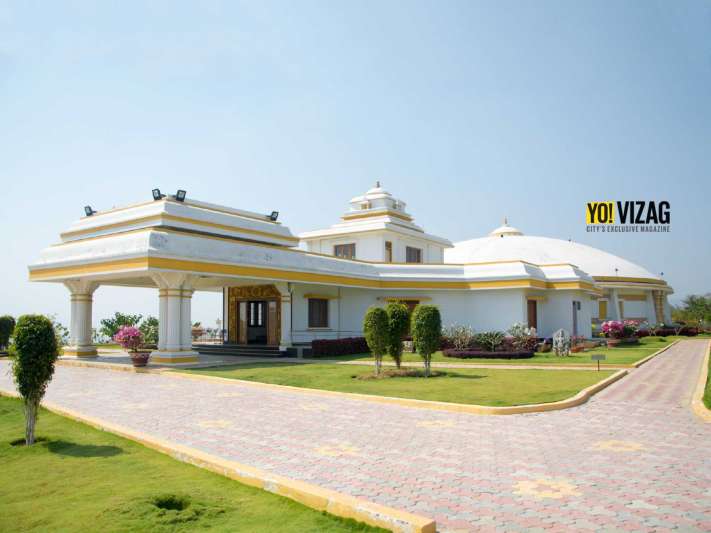

“Italian of the East” is how Nicolo di Conti, a traveller from Italy, described the language when he visited the Vijayanagara empire of Sri Krishnadevaraya eons ago. According to him, the words were musical, and would end with “du, mu, vu, lu” etc as in Italian. An English officer posted in Telugu land, C P Brown was so taken in by the language that to preserve its literature he compiled the first ever Telugu-English and English-Telugu dictionaries. The Tamil poet Subrahmanya Bharati, praised the language for its inherent sweetness, terming it as ‘Sundara Telingi’ in his famous song on national integration. But then scores of litterateurs through centuries have enriched Telugu; while native as well as non-native speakers of Telugu have found reason to praise and acknowledge the beauty of the language. And presenting the history and cultural heritage of this sweet language, the World Telugu Museum or the Telugu Saamskritika Nikethanam stands high in the midst of lush green on Kailasagiri.
Conceived with the sole purpose of showcasing the historical significance and evolution of the language, this unique museum was taken up by Visakhapatnam Urban Development Authority (VUDA) in association with World Telugu Federation (WTF). It was inaugurated by Chandrababu Naidu on November 19, 2015. The art and design of the museum was created by prominent art director, the Padma Shri awardee, Thota Tharini.
With an arch in Kakatiya architecture at the entrance, every inch of the museum has been thematically designed to showcase heritage, historical significance and evolution of the language. Paintings, art work of Thota Tharani, Kalamkari work by artists from Sri Kalahasti, magnificent wood works, sculptures, large ‘Lepakshi’ paintings adorning the ceiling and an audio-visual presentation of the history of Telugu are key aspects of the museum. A rotating platform allows visitors to travel through the language’s history via the 58-minute audio-visual presentation.
The museum also displays close to 200 ‘Fibre Reinforce Plastic’ (FRP) sculptures associated with the language. Telugu Thalli, the famed Thousand pillar temple, the Satavahana kings, Sri Krishnadevaraya in his court, the poetess Molla, the Lepakshi Nandi, Annamayya, Penukonda Fort, slabs with various laws etched on them, Rani Rudramadevi and history of the Kakatiyas, the history of Bhadrachalam, Amravathi; anything and everything associated with the language’s history, culture, literature and heritage has been symbolised in this museum. The entrance room itself consists of the portraits of 70 prominent persons from Andhra Pradesh including Prime Ministers, Chief Ministers, Dadasaheb Phalke awardees, Jnanpith awardees, litterateurs and freedom fighters.
With the sheen of the language reducing due to an overdependence on the ease of English, this museum showcases the beauty and versatility behind the vernacular. More importantly it shines a light on the rich past associated with the language and the stories that were born with it. Definitely a must-visit, the Telugu museum is a door into the cultural richness of our country, and we must experience it.
This post was last modified on 27/03/2017 11:39 am
Brownies are one of the most popular desserts around the world. You can make this…
People look up to prodigies and geniuses for their uncanny intellect. While the appeal of…
The Vizag Police authorities caught 212 kgs of Marijuana in two separate cases near Anandapuram…
Long-awaited metro rail projects in Visakhapatnam and Vijayawada are showing signs of real progress, as…
Through the never-ending work hustle, there are certain moments of joy, be it with your…
Semi-Ring Road Around Visakhapatnam: In a major infrastructure push, the Andhra Pradesh government has announced…
Leave a Comment